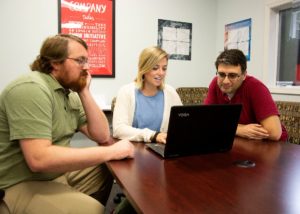So, for this blog post, I am going to address one new tool that I’ve implemented as a result of my Kenan experience. Now, I get that I’m a millennial and I should be super tech and social media savvy, but I am NOT, yet (see: ‘Growth Mindset: Grown-Up Edition’ post). I have used Facebook for years to enhance my teaching practice. For example, I belong to ‘groups’ on Facebook that address topics such as flexible seating, National Boards standards, special education curriculum, and growth-mindset. I have collaborated with educators around the nation in an effort to improve the quality of curriculum and content that I deliver to my students. However, before this summer, I have never used Twitter.
Before I dive into how I got a Twitter and how it has had a positive impact on both myself and my students, I want to tell you WHY I didn’t have a Twitter before this point. The thought of short snippets of thoughts constantly being thrown into an atmosphere within the confines of 140 characters made me feel anxious just thinking about it. How would I keep up with the thoughts of others? Would I spend too much time looking at the tweets of others, that I forget to tweet about my own thoughts? How can I express myself in 140 characters? What if my tweets are interpreted the wrong way? How can I create the perfect #hashtag to accurately portray the intended message? So, instead of addressing these concerns, I avoided them. Until June 17th.
At the Summer Institute, I saw how my cohort of Kenan Fellows was using Twitter as a means to collaborate with teachers across the nation to improve their teaching practices- just as I was using Facebook to achieve similar results. So, on June 17th, I created a Twitter account. I was slow to use it at first, but have quickly fallen in love with this social media platform. I use the platform to post pictures of different activities that I do with my students, and to showcase certain events that we take part in. This has allowed for me to bond with teachers at my school who I normally wouldn’t connect with. I use the platform to learn about sporting events, art performances, or class projects that take place at the school that I didn’t know about previously. I use Twitter to explore what other secondary special education teachers are doing in their classroom, in hopes of improving my own practices.
My students are proud to have their school work or other accomplishments displayed on my Twitter. To them, it’s a platform that I use to showcase what we are doing in class. What they don’t realize is how enhanced their lessons are because of Twitter and the help of fellow educators!
Oh yeah, follow me! @MsOlson_NC
-Caroline
